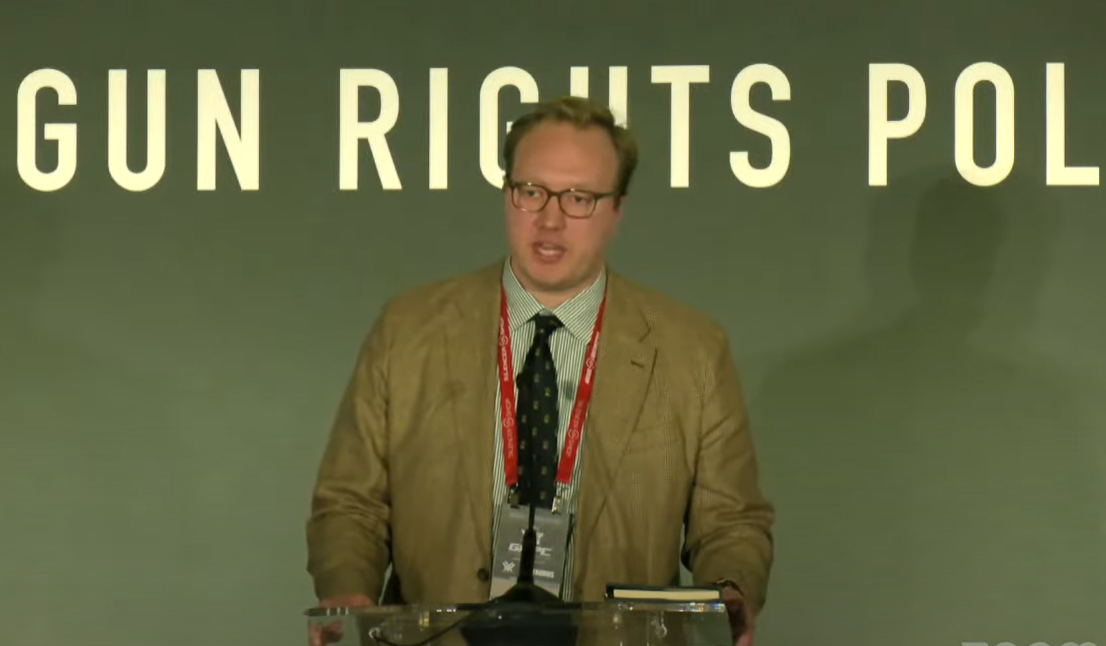
By Dave Workman
“The Second Amendment empowers the American people to defend themselves, and to do it with the tools that they choose.”
So stated attorney Will Bergstrom with Cooper & Kirk, perhaps the nation’s most high-profile law firm litigating Second Amendment cases. He was making an afternoon presentation at the annual Gun Rights Policy Conference held recently in Salt Lake City, in which he told the audience of activists from across the country that “We are playing a long game.”
He opened his remarks by referring to a recent article in The Atlantic, which he suggested amounted to an attack on the Supreme Court’s landmark 2022 Bruen decision, which did away with means-end scrutiny and declared New York’s concealed carry restrictive permitting scheme is unconstitutional.
He referred to the dissent in a 2024 case known as Hanson v. District of Columbia, in which the dissenting judge pointed to four important “holdings” established in the 2008 Heller ruling:
- As a general matter, the Second Amendment guarantees an individual right to keep and carry arms, though the right is not unlimited;
- Courts must rely on the historical understanding of the amendment to demark limits on the exercise of that right
- While the United States has a tradition of prohibiting the carrying of dangerous and unusual weapons, there is no tradition of banning arms in common use, so arms in common use are protected, and a complete prohibition of their use is invalid
- Because handguns are in common use today, law-abiding citizens have a Second Amendment right to keep them in their homes for self-defense.
But there is more to this dilemma, because so far, appeals courts have not embraced the “common use” standard, and this is where the Supreme Court must step in and clarify the issue, he explained.
“In the interim, post-Bruen, several courts of appeals have taken these cases and none of them so far have endorsed the common use standard. Instead we have a multiplicity of standards across the country,” he said.
The result has been a set of conflicting standards between the courts, leaving a “multiplicity of standards across the country.”
“And that puts us in a difficult position as litigants and advocates and lawyers,” Bergstrom said.
In order to secure victories in the various cases, he said not only must the Second Amendment movement accept the fact of the “long game,” it is also important to “put some flesh” on the “common use” argument.
As courts have so far apparently rejected common use as the deciding factor, they have displayed a misunderstanding of the term and why it is a sensible standard.
Bergstrom said the high court has indicated another Second Amendment case may be on the horizon. When that happens, whatever decision comes down will hopefully add further clarification on what the Second Amendment encompasses.
Workman is editor-ion-chief at TheGunMag.com